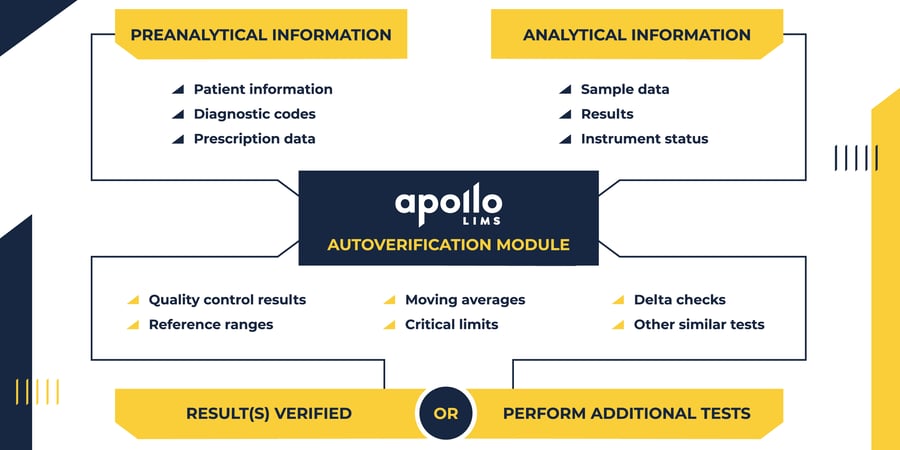Background on autoverification and the LIMS:
As the saying goes, “effectiveness is about doing the right things while efficiency is about doing things right”. And it has never been more important for highly functioning laboratories to focus on both measures of success.
However, maximizing these goals simultaneously can at times be challenging. This is especially true for clinical laboratories in which technicians must repeat the same verification steps for individual results across large numbers of specimen data.
Verification is a tedious exercise for laboratory technicians, and the risk for human error is high. To combat this risk, laboratories have historically instituted multi-person verification techniques. Thankfully, with the advent of the Laboratory Information Management System (LIMS), these verification techniques can be automated to generate more accurate results, thereby contributing positively to the lab’s overall effectiveness and efficiency.
Although there are a variety of LIMS on the market, a quality system will offer an autoverification module in addition to the standard modules for handling specimen processing and reporting. The autoverification module uses rules-based algorithms to verify laboratory test results, eliminating a significant portion of the tedious, repetitious manual work. These rules are written to provide step-by-step instructions related to the test results, allowing the repeated, rapid, and accurate verification of each result.
Why the ApolloLIMS approach to autoverification is best
The manner in which ApolloLIMS approaches autoverification is unique and contributes greatly to overall laboratory effectiveness and efficiency. The Autoverification Module is highly robust, and can stand alone as a middleware installation or be fully integrated within the ApolloLIMS core platform. It can support the most complex locally defined algorithms and incorporate quality control metrics like Levey-Jennings and Westgard rules. The Autoverification Module conducts analytical checks before, during and after testing, as illustrated below:

According to Sutter Health Shared Laboratory in Livermore, California, a current ApolloLIMS customer, the Autoverification Module has enabled them to better manage orders from a very diverse group of healthcare providers and systems. In a CAP Today article published a few years ago, Sutter’s laboratory administrative director David Velasquez, CLS, MT(ASCP), said he “needed a central system that could adjust to all of the differences” and chose ApolloLIMS. Flexibility in design and deployment of these tools is critically important for today’s modern laboratory, and ApolloLIMS excels in this area.
Autoverification is a necessity in today’s clinical lab. And the ApolloLIMS innovative approach to autoverification will have you doing the right things and doing things right every time.
